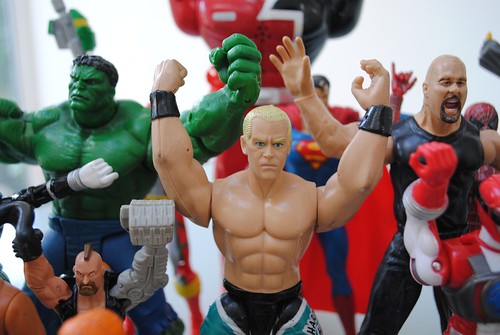“You’re Just Not Leadership Material” on Great Leadership Blog

Great Leadership Blog
My thanks to Dan McCarthy of the Great Leadership blog. Here’s a link to my guest post You’re Just Not Leadership Material.

Great Leadership Blog
My thanks to Dan McCarthy of the Great Leadership blog. Here’s a link to my guest post You’re Just Not Leadership Material.

No one, including superheros, has all the answers.
Guideline #5 – Don’t try to have all the answers
HBR author Charalambos Vlachoutsicos writes that “Problem solving is central to the manager’s sense of self, and feelings of inadequacy can surface when a solution is elusive.”
This guideline dovetails with his first guideline, “be modest.” If we can take our egos out of the equation, we are free to get input from others and to encourage them to be their best thinking. Think of the process as team building, particularly if you’re grooming someone to be the “go to” person when you’re not around. Continually ask, “What do you think?”
If you pay attention, you will find someone (or several people) who consistently come up with ideas that are as good or better than your own. Essentially, you want to identify those people who put the good of the firm ahead of their own personal agenda, as well as those who can control their emotions and make solid decisions. Of course, you’ll never find these people if you spend all your time in your office trying to solve all the problems your self.
If you’ve read my book, Building a Winning Business, you might think I’m contradicting myself. After all, chapter 55 is called “Leaders Solve Problems.” But if you read it carefully, you’ll recall that my advice is to involve others in brainstorming solutions – as well as holding others accountable for making sure solutions are implemented.
As my team frequently says, “One team, One dream!”

the Big Biz Show
My thanks to Rob “Sully” Sullivan, Rust T Nailz, and Maureen Barnes of the Big Biz Show for having me as a radio guest on their show on Tuesday.

Small Business Bonfire
My thanks to Alyssa Gregory and the Small Business Bonfire for having me as a guest blogger. Here’s a link to my post, 8 Lessons Learned on the Family Farm.

The road to hell is paved with good intentions.
Guideline #4 – Focus the Agenda
Notes HBR author Charalambos Vlachoutsicos, “The road to hell is paved with good intentions. I’ve often seen managers who willingly invite disagreement do it in an undisciplined way, especially in meetings where all ideas are on the table. The trouble is that the more you put on the agenda, the less time each person has to talk, unless your meeting runs for a long time. If you set a time limit, you end up racing through parts of the agenda, which causes consternation.”
Well, I agree and I disagree.
Some meetings should be short and to the point. Others should be more open ended to allow for fuller discussion, disagreement and clarification. The key is know in advance what kind of meeting you’re having and to make sure everyone else does too!
For example, we do limit our weekly huddle meetings to 15 minutes (see chapter 46, Communicate Early and Often in my book, Building a Winning Business) and we only include three items on the agenda: big updates, stuck items and our financial numbers. Because the purpose of these meetings is to share big news and quickly solve small problems before they become big ones, I often set the tone by acknowledging that “I don’t have any group-worthy updates. Who’s next?”
Bigger issues get tabled to our monthly “workout” meeting. I’m not shy about letting someone know in a huddle if the issue they’re raising needs to wait for the next workout.
In addition, every quarter we take time at a workout meeting to recap how we’re doing with our strategic objectives (which are decided at the annual two-day offsite—see previous post) and to decide on any necessary mid-year adjustments.
This cascade approach allows us to keep in sync on the day-to-day major updates and financial performance indicators, while making sure bigger issues don’t get lost or glossed over in the daily hub-bub. Just as important, we are careful to keep our eye on the big picture to ensure that the overall objectives are on track too.